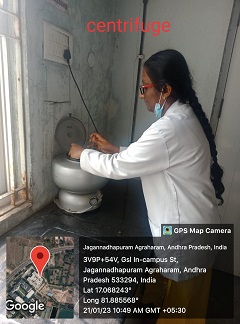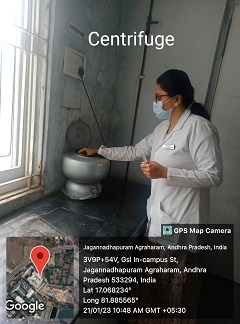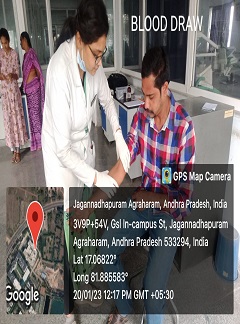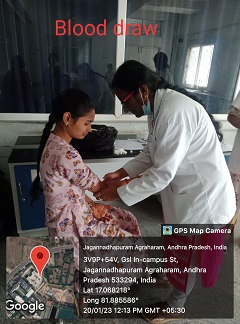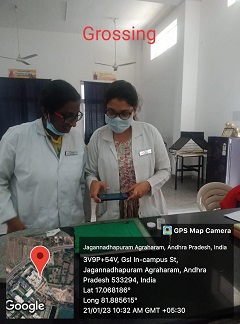


Oral Pathology Promotes awareness of oral health and prevent oral diseases. Participating in camps organized by the local dental institution and educating the public about various oral diseases such as oral cancer, caries, periodontal etc. through speeches, audio-visual presentations, diagrams, models, etc. Promotes learning and helps the student acquire enough information about the development, structure and function of facial tissues as well as diseases of the facial area so that the student has a solid basis for understanding common dental diseases and initiating the most appropriate treatment. Combining traditional teaching techniques with innovative teaching methods and promoting student centredlearning. Special attention is given to students with learning difficulties. Periodic evaluation is done to ensure that students have received sufficient information.To disseminate sufficient information about the importance of oral-facial diseases and theetiology and pathogenesis of oral diseases. Provides deep knowledge and skills in the evaluation of clinical findings, the ability to perform and interpret various research procedures to determine the final diagnosis and initiate the correct treatment. Helps the physician develop a better treatment plan by providing an accurate histopathological diagnosis. Critically analyzing histopathological features and combining them with clinical data to obtain the most appropriate diagnosis of oral and facial diseases in the shortest possible time. To carry out research activities related to oral diseases to develop newer diagnostic techniques for early diagnosis of oral cancer and pre-cancer and to add a knowledge component to existing knowledge. Conducting qualitative research, applying for funded projects and bringing more publications to departments.
We have Penta headed microscope that can be used for teaching and demonstration purpose which provides ease to observe the slide at a time with 5 students which is connected directly to the digital screen where we can capture the images of the slides in different magnifications. Useful for postgraduate and undergraduate teaching.
40 Light microscopes which are used for focusing the histopathology and ground section slides for undergraduates.
Compound microscope is an optical microscope which is used to observe small specimens of slide at different high magnifications. Useful for reporting slides.
Stereomicroscope/ dissecting microscope which is used to view three-dimensional structure of specimen. This equipment is useful for interdisplinary departments such as endodontics and prosthodontic.
We have immunohistochemistry facility
The following investigations are available :
• Blood sugar levels.
• Bleeding and clotting time.
• Hemoglobin levels.
• Viral marker investigations, (HIV, Hepatitis-B and Hepatitis-C)
• Centrifuge is available in the department which can be used to do PRF and PRP procedures are done in the lab.
• Biopsy.
• Cytology.
• Hematoxylin and eosin staining, and PAP staining is also done in the department
Oral& Maxillofacial Pathology: MDS program
The goal of the advanced graduate in oral and maxillofacial pathology (OMP) program at GSL Dental College is to train a student who will be able to provide the highest level of microscopy diagnostic skills, utilizing new technologies in immuno-histochemistry and molecular studies, diagnose and manage patients with salivary gland, jaw bone and mucosal diseases, . They also get trained in head and neck pain syndromes where the primary treatment modality is non-surgical, perform and/or collaborate in scientific or clinical research projects; and excel as a medical educator and leader in the specialty.
Students in this program work towards a certificate in Oral and maxillofacial pathology. In this program, students develop their microscopic, clinical and critical thinking skills in a resource-rich, supportive, collegial and collaborative environment. The oral and maxillofacial pathology program begins with an intensive didactic curriculum lasting 3 years that provides a broad understanding of the pathophysiology and behavior of disease and a strong theoretical background in the area of student’s research interests. All students are expected to complete oral histology and anatomy along with curriculum prescribed by Dental council of India. Clinical training in oral and maxillofacial pathology consists of two components - Histopathology and patient care. Students undergo rigorous histopathology training in oral, head and neck, and general pathology. Students are encouraged to take an active participation in National and International conferences and present the scientific data in the respected quorums. Students are also encouraged to take a small research projects. Students work with nationally and internationally renowned researchers and receive guidance from their institute's principal investigators. Beginning in their first year, all students are encouraged to familiarize themselves with the various research opportunities available at GSL educational Institutions and are given the opportunity to identify projects that meet their individual interests and needs. After six months of joining of their first year, students should identify a research supervisor and begin research activities. After the start of the MDS program, students continue to participate in histopathology training and histopathology seminars, although an increasing proportion of their time is devoted to research, but they are also involved in undergraduate teaching.
UG oral pathology
Airy and spacious, with excellent infrastructure and a unique atmosphere, the Department is blessed with the best faculty who enlightens and enriches the knowledge for their students. This department has separate units for postgraduate and undergraduate courses. This department is involved in the training of I BDS, II BDS, and III BDS students in the subjects Dental Anatomy and Histology, Oral Pathology, and Microbiology.
In dental anatomy and histology, each year minimum 40 hours of theory covering all basic aspects and 90 hours of practical work covering dental development and various other oro-facial structures and normal morphology. 1st year and 3rd year BDS students will be made familiar with GSL Smart lab where in students will have an overview of smart lab and also hands-on experience on Anatomage table, in 3rd year students will get trained for Intramuscular and intravenous drug administration on mannequins. Students will also grind all permanent teeth and perform longitudinal and horizontal sections for microscopic studies. In Oral Pathology, minimum 50 hours of theory cover all basic aspects, and 90 hours of hands-on classes each year to identify pathology slides, models and specimens of oral diseases and train students to do so. Students will also receive training through presentations and schematics of cases of oral disease. Students participate in discussions and conduct seminars.

